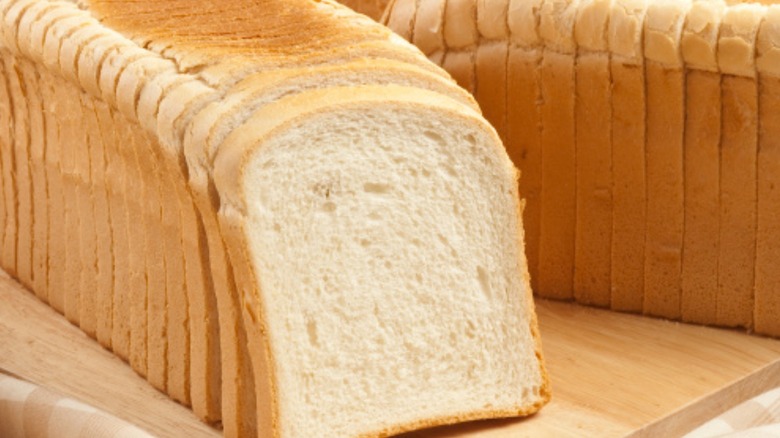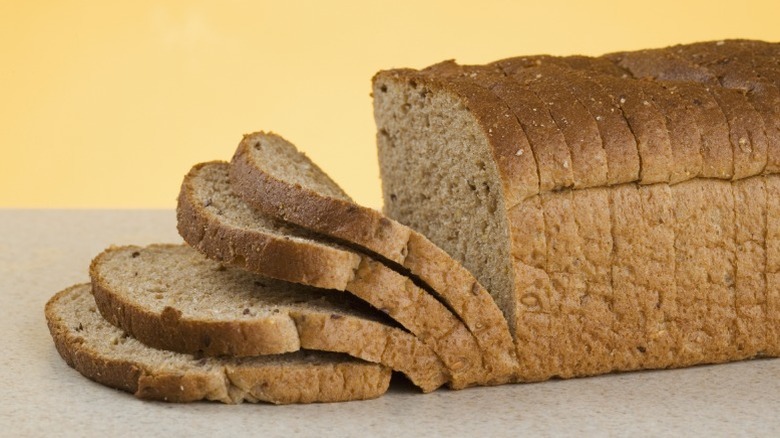The Time When Sliced Bread Was Banned In The US
Sliced bread — that is, loaves of bread sold pre-sliced to make our favorite sandwiches or freshly buttered toast extra convenient — is a relatively recent invention. The bread-slicing machine was invented in the 1920s by one Otto Frederick Rohwedder, and sliced bread only proliferated the market in the early 1930s. But, once it proliferated, it became very popular indeed. (That old expression "it's the best thing since sliced bread" didn't come from nowhere.) So, you can imagine the kind of outcry that happened when the U.S. government (briefly) banned sliced bread altogether — yes, really.
What could possibly possess the government to ban something as popular and innocuous as sliced bread? Did enemy spies sabotage the bread-slicing machines? Did Joseph McCarthy convince President Truman that carbohydrates were Communist? No, the answer's a lot more straightforward: It was 1943, the thick of America's involvement in World War II, and the United States was rationing everything it could.
Banning sliced bread was too much for rationing Americans
It should be noted that it wasn't the bread itself that concerned the U.S. government. Bread was viewed as an essential product in a way that steak or sugar were not. What the government was actually trying to preserve was the wax paper that sliced bread was wrapped with, as well as the metal used to make the bread-slicing machines. But, while Americans on the homefront were willing to go along with certain rations for the sake of their boys in Europe (even the kind that had them inventing fake bananas), taking away their sliced bread proved to be a bridge too far. Women were reported struggling with old bread knives they hadn't used in years, and some even wrote letters of protest explaining that they didn't have time to cut over 20 slices of bread to feed their large families every day.
Eventually, after New York City Mayor Fiorello LaGuardia gave his city bakers permission to use bread-slicing machines they already owned, it became clear that there was no popular support, and the ban was walked back. Although Americans only got sliced bread a decade earlier, they weren't going to let anyone take it away.

